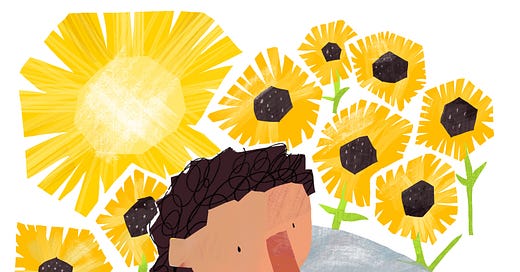“Making an illustration is assembly work, first in that your role is being in assembly line with other players who have gone before you, but also with assembling your own prep into interesting configurations”.
I see making an illustration as assembly work.
First in that your role is being in assembly line with other players who have gone before you, providing you the initial elements of brief and text, sometimes even reference, and all sorts of treasures.
Second we need to assemble from all our own preparation, sketches, colours reference, moods and experience into something of value first to the commissioner, and as far as possible to ourselves.
The success of an illustration depends on our ability to be a team player knowing how to work with the people and materials at hand, but also managing yourself and what you bring to the piece.
It’s in knowing what to keep and what to discard.
That can be anything from sketches, colours or even suggestions and feedback that don’t work. It’s think this is why simpler illustration styles work so well because it’s in the simplicity that lots of perspectives points of views and agenda can be incorporated.
This is a prepetory sketch:
And this is the resulting illustration:
Thinking of illustration as an assembly project informs my workflows and my collaborations.
Does thinking of illustrating as an assembly project resonate with you?
Is this how you think about it too or is it foreign, how do you think about making an illustration?
TenMinuteArtist Prompt:
Make an illustration
Design an icon for a personalised greeting card to a particular person you know.
Here are the steps:
Make a list of things you both like in relation to the celebration (write or draw)
Try different sketch versions of some of the objects (draw ideas as objects)
Assemble the final icon as an illustration
PS: If I get one paid subscription today, I’ll share a Timelapse of the making of this illustration in the weekly recap.
Know someone who might enjoy this post?
⚠️ If you want to get prompts in your inbox box Daily make sure Page-A-Day Edition is toggled on (And vice versa)
You are reading part Five in a series called Drawing for Illustration.
Ten Minute Artists,is a Page-a-day guide that offers fun prompts, encouragement, and thoughtful perspective for every stage of the creative journey to help new and experienced creators alike advance their quest in 10 minute increments.
Award winning illustrator Adam Ming draws lessons from creative legends, industry experts, and his own experience of rapidly breaking into international publishing from a third world country.
Paid Subscribers to get Access to ALL 365 issues
(Free subscribers get MOST issues)
More ways to support TenMinute Artist: buy my books | visit this affiliate link to start writing online | shop at my mom’s stationery shop :)
Want to practice drawing together?
If you would like to draw together with me and my illustrator friend Katie Stack every month live on Zoom, sign up for Art Gym. Art gym is a fun and social way to practice drawing at any skill level.
And if you have a minute: 💬 Say Hi to the community in the chat!








I like to think of illustration as a theatre stage or movie set depending on the scene. Straight shots are great for an audience viewing the stage; however, camera angles in movie sets are good for dynamic views such as top down, behind the character, establishing wide shot.
I think seeing initial sketches and then final art is one of the most helpful learning tools. Thank you for sharing this!